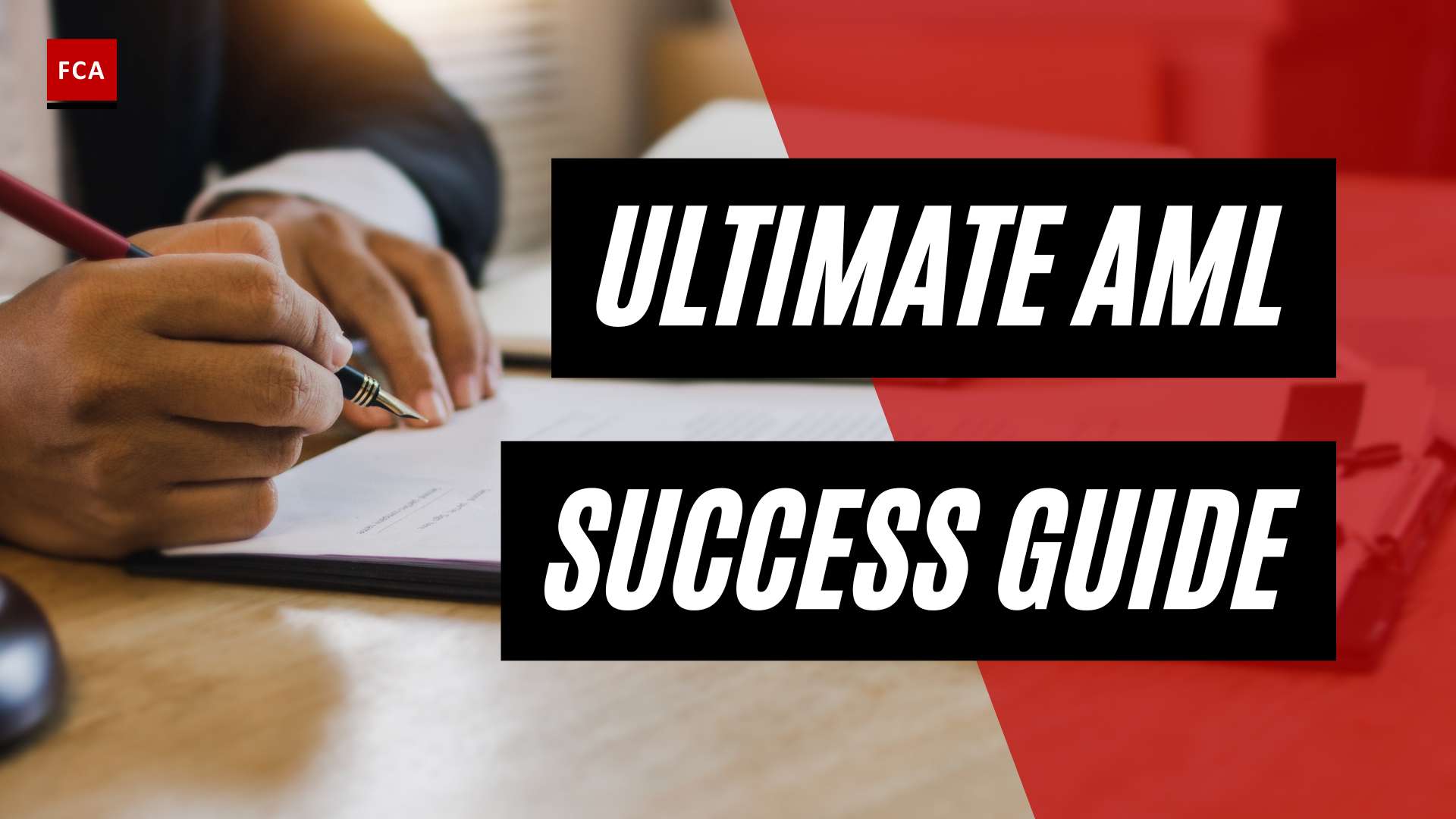AML Monitoring in Crypto Transactions
In the world of cryptocurrency, ensuring compliance with Anti-Money Laundering (AML) regulations is of paramount importance. AML monitoring plays a crucial role in maintaining the integrity of crypto exchanges and preventing illicit activities. This section will explore the fundamentals of AML in crypto transactions, highlight the significance of AML in crypto exchanges, and outline the compliance requirements that crypto exchanges must adhere to.
Understanding Anti-Money Laundering (AML)
Anti-Money Laundering (AML) refers to a set of laws, regulations, and procedures designed to detect, prevent, and deter money laundering and the financing of illegal activities. The primary objective of AML is to protect the global financial system from being exploited by criminals seeking to hide and legitimize the proceeds of their illicit activities.
In the context of cryptocurrency, AML regulations aim to address the unique challenges posed by digital assets, such as their pseudonymous and decentralized nature. By implementing effective AML measures, crypto exchanges can mitigate the risk of facilitating money laundering, terrorist financing, and other financial crimes.
The Importance of AML in Crypto Exchanges
AML holds significant importance in the realm of crypto exchanges. These platforms facilitate the trading of cryptocurrencies and act as intermediaries between buyers and sellers. As crypto transactions can involve large sums of money and occur across borders, they present attractive opportunities for money launderers.
By implementing robust AML measures, crypto exchanges can help protect their platforms, users, and the broader financial system from illicit activities. AML monitoring enables exchanges to identify and report suspicious transactions, mitigate potential risks, and ensure compliance with regulatory requirements.
Compliance Requirements for Crypto Exchanges
Crypto exchanges are subject to various compliance requirements to prevent money laundering and terrorist financing. These requirements may vary depending on the jurisdiction and the nature of the exchange’s operations. Some common compliance requirements for crypto exchanges include:
-
Know Your Customer (KYC) Procedures: Crypto exchanges are often required to implement robust KYC procedures to verify the identities of their customers. This includes collecting and verifying customer information, such as identification documents and proof of address. KYC procedures help ensure that exchanges have accurate and up-to-date information about their customers, reducing the risk of facilitating illicit activities.
-
Transaction Monitoring Systems: Crypto exchanges are expected to have transaction monitoring systems in place to detect and report suspicious activities. These systems analyze transaction patterns, amounts, and frequencies to identify potentially illicit transactions. By monitoring transactions in real-time, exchanges can promptly flag suspicious activities and take appropriate action.
-
Suspicious Activity Reporting (SAR): Crypto exchanges are often required to file Suspicious Activity Reports (SARs) with the relevant authorities when they encounter transactions that raise suspicions of money laundering or other financial crimes. SARs provide a mechanism for exchanges to report their concerns and share valuable information with law enforcement agencies.
To ensure compliance with AML regulations, crypto exchanges should stay up to date with the evolving AML landscape, implement effective AML software solutions, conduct regular AML audits, and establish robust AML policies and procedures. For more information on AML compliance for crypto exchanges, check out our article on aml compliance for crypto exchanges.
Understanding the fundamentals of AML in crypto transactions, recognizing the importance of AML in crypto exchanges, and adhering to the necessary compliance requirements are essential for maintaining a secure and trustworthy cryptocurrency ecosystem.
AML Monitoring Tools and Techniques
To effectively monitor Anti-Money Laundering (AML) activities in crypto exchanges, various tools and techniques are employed. These tools aid in detecting and preventing illicit financial transactions, ensuring compliance with regulatory requirements. The key tools and techniques used in AML monitoring for crypto transactions include transaction monitoring systems, Know Your Customer (KYC) procedures, and Suspicious Activity Reporting (SAR).
Transaction Monitoring Systems
Transaction monitoring systems are essential for detecting and analyzing suspicious activities in crypto transactions. These systems use advanced algorithms and rule-based methodologies to analyze transaction patterns, identify anomalies, and flag potentially illicit transactions. By monitoring transactional data, such as the source, destination, and amount of funds, these systems can identify high-risk transactions that may require further investigation.
Transaction monitoring systems can be customized to align with the specific requirements of crypto exchanges. They can incorporate features such as real-time monitoring, behavior-based analysis, and rule-based filters to effectively identify suspicious activities. These systems play a crucial role in ensuring compliance with AML regulations and helping crypto exchanges maintain a robust compliance framework.
Know Your Customer (KYC) Procedures
KYC procedures are a fundamental component of AML monitoring in crypto exchanges. These procedures involve verifying the identity of customers and assessing the risk associated with their transactions. By implementing KYC processes, crypto exchanges can collect relevant information about their customers, such as their name, address, and identification documents, to establish the authenticity of their identities.
KYC procedures enable crypto exchanges to determine the risk profile of their customers and categorize them accordingly. This risk-based approach allows exchanges to allocate resources more efficiently by focusing on high-risk customers and transactions. KYC procedures also contribute to the prevention of fraud, money laundering, and terrorist financing by establishing a transparent and accountable customer base.
To learn more about KYC procedures specifically for cryptocurrency exchanges, you can refer to our article on KYC procedures for cryptocurrency exchanges.
Suspicious Activity Reporting (SAR)
SAR is a critical tool for AML monitoring in crypto exchanges. It involves the identification and reporting of potentially suspicious activities to the relevant authorities. SAR is triggered when transactions or customer behaviors exhibit red flags that indicate possible involvement in money laundering, terrorist financing, or other illicit activities.
Crypto exchanges must have well-defined processes in place to identify and report suspicious activities promptly. By doing so, they contribute to the overall efforts to combat financial crime and maintain the integrity of the crypto ecosystem. Effective SAR procedures involve internal reporting mechanisms, clear guidelines for identifying suspicious activities, and collaboration with law enforcement agencies when necessary.
For comprehensive guidance on AML compliance and best practices for crypto exchanges, you can refer to our article on AML compliance for crypto exchanges.
By utilizing transaction monitoring systems, implementing robust KYC procedures, and establishing efficient SAR processes, crypto exchanges can enhance their AML monitoring capabilities. These tools and techniques play a crucial role in safeguarding the integrity of crypto transactions and ensuring compliance with AML regulations.
Unique Challenges in AML Monitoring for Crypto Transactions
Monitoring anti-money laundering (AML) compliance in the realm of cryptocurrency transactions presents unique challenges. These challenges arise from the inherent characteristics of cryptocurrency, such as anonymity and pseudonymity, rapid transaction speeds and volumes, as well as emerging risks and evolving regulations.
Anonymity and Pseudonymity in Cryptocurrency
One of the primary challenges in AML monitoring for crypto transactions is the level of anonymity and pseudonymity associated with cryptocurrencies. While traditional financial systems require the identification of individuals involved in transactions, cryptocurrencies can provide a certain level of anonymity by utilizing cryptographic techniques. This anonymity makes it challenging to trace the true identities of the parties involved, which can facilitate illicit financial activities such as money laundering and terrorist financing.
To mitigate this challenge, crypto exchanges and other participants in the cryptocurrency ecosystem are increasingly implementing robust KYC procedures to verify the identities of their customers. By collecting and verifying customer information, exchanges can enhance their ability to detect suspicious activities and comply with regulations.
Rapid Transaction Speeds and Volumes
Cryptocurrencies are known for their fast and high-volume transaction capabilities. This presents a challenge for AML monitoring as it requires the implementation of efficient transaction monitoring systems that can handle the large influx of data in real-time. Monitoring such rapid transaction speeds and volumes is crucial to identify and flag potentially suspicious activities, such as large-scale money laundering schemes or transaction patterns indicative of illicit activity.
AML monitoring tools and technologies, including advanced analytics and machine learning algorithms, play a vital role in managing this challenge. These tools can help analyze transaction patterns, detect anomalies, and provide alerts to compliance personnel for further investigation. To learn more about the software solutions available for AML monitoring in the cryptocurrency space, refer to our article on cryptocurrency AML software solutions.
Emerging Risks and Evolving Regulations
The world of cryptocurrencies is constantly evolving, with new technologies and digital assets emerging regularly. This dynamic environment introduces additional complexities for AML monitoring. Emerging risks may include new methods of money laundering, such as the use of privacy-focused cryptocurrencies or decentralized exchanges that offer increased anonymity.
To address these risks, regulatory authorities are continually updating and refining AML regulations specific to the cryptocurrency industry. Compliance personnel and crypto exchanges must stay informed about the AML regulations in the crypto sphere and adapt their AML monitoring practices accordingly. Regular AML audits can help ensure compliance with evolving regulations and identify areas for improvement.
By acknowledging and addressing these unique challenges, crypto exchanges and other entities involved in cryptocurrency transactions can enhance their AML monitoring capabilities. Implementing a risk-based approach, utilizing technology and automation, and providing training and education to compliance personnel are essential best practices for effective AML monitoring in crypto exchanges. These measures help to safeguard the integrity of the cryptocurrency ecosystem and promote a secure environment for financial transactions.
Best Practices for Effective AML Monitoring in Crypto Exchanges
To ensure the integrity of the cryptocurrency market and combat illicit activities, crypto exchanges must implement robust Anti-Money Laundering (AML) monitoring practices. By adhering to best practices, these exchanges can mitigate risks and contribute to a safer and more compliant ecosystem. Here are three key best practices for effective AML monitoring in crypto exchanges:
Implementing Risk-Based Approach
One of the fundamental best practices in AML monitoring for crypto exchanges is adopting a risk-based approach. This involves conducting thorough risk assessments to identify and prioritize potential money laundering threats and vulnerabilities. By understanding the specific risks associated with their operations, crypto exchanges can allocate resources and implement appropriate measures to address those risks effectively.
A risk-based approach allows exchanges to focus their AML efforts on the areas that pose the highest risks. This may include enhanced due diligence for high-risk customers, transaction monitoring for suspicious activities, and regular assessments of the effectiveness of their AML program. By constantly evaluating and adapting their strategies based on risk profiles, crypto exchanges can stay ahead of emerging threats and meet regulatory requirements.
Utilizing Technology and Automation
As the cryptocurrency market grows in complexity and volume, manual AML monitoring processes become increasingly challenging. To effectively monitor transactions and detect suspicious activities, crypto exchanges should leverage technology and automation tools.
Transaction monitoring systems play a vital role in AML monitoring for crypto exchanges. These systems analyze transactional data in real-time, applying predefined rules and algorithms to identify anomalies and potential money laundering activities. By automating this process, exchanges can efficiently process a large volume of transactions, reducing the risk of oversight and human error.
Additionally, utilizing advanced technologies such as artificial intelligence and machine learning can enhance the effectiveness of AML monitoring. These technologies can analyze vast amounts of data, identify patterns, and generate alerts for further investigation. By harnessing the power of technology, crypto exchanges can enhance their AML monitoring capabilities and stay ahead of evolving money laundering techniques.
Training and Education for Compliance Personnel
An often overlooked but crucial aspect of effective AML monitoring in crypto exchanges is investing in training and education for compliance personnel. AML regulations and best practices are constantly evolving, and it is essential for compliance personnel to stay updated and knowledgeable.
By providing comprehensive training on AML regulations, emerging trends, and effective monitoring techniques, crypto exchanges can empower their compliance teams to effectively identify and address potential money laundering risks. This includes understanding the nuances of cryptocurrency transactions, familiarity with KYC procedures for cryptocurrency exchanges, and staying informed about anti-money laundering regulations in crypto.
Continuous education and professional development programs ensure that compliance personnel are equipped with the necessary skills and knowledge to navigate the ever-changing landscape of AML monitoring in the crypto industry. This, in turn, strengthens the overall compliance framework of the exchange and helps maintain its integrity.
By implementing a risk-based approach, utilizing technology and automation, and investing in training and education, crypto exchanges can establish effective AML monitoring practices. These best practices not only help exchanges meet their regulatory obligations but also contribute to the overall security and integrity of the cryptocurrency market.








